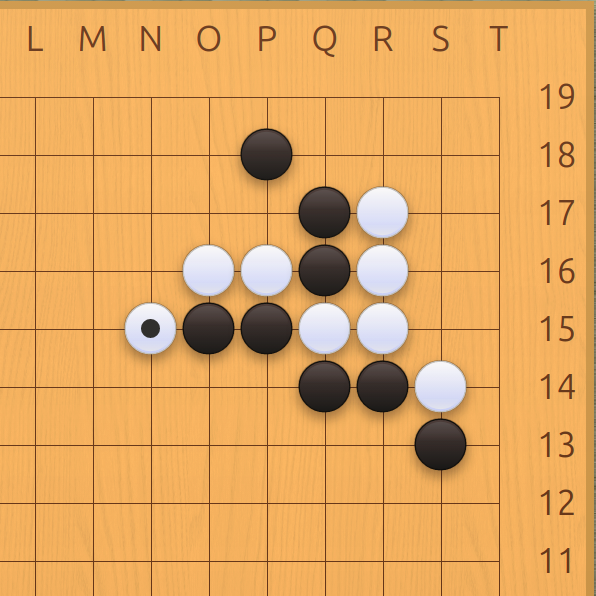Accumulating Knowledge #

A sequence is a studied series of moves considered locally optimal. The best-known sequences, called Joseki, typically take place in the corners, but standardized move sequences can also exist on the sides or in the center of the goban. There can be many variations within the same sequence.
Learning sequences is a less critical part of learning than playing, analyzing, and solving problems. Some people love and can absorb an incredible number of sequences, but if you don’t particularly enjoy this aspect of the game, you shouldn’t force yourself to spend a lot of time on it.

Some sequences are terribly complex to learn.
Nevertheless, learning sequences is far from useless, and can give you significant advantages. On the one hand, knowing the final shapes of certain sequences will allow you to choose them better: you won’t need to read the sequences on the spot. Similarly, if a ladder is part of a sequence, you take less risk of making a mistake by already knowing the sequence. Along the same lines, some sequences include moves that are difficult to see on your own; again, knowing the sequence will allow you to play the right moves without having to think too much about it. Finally, and this is not the least of the advantages, knowing certain sequences will allow you to be more confident when playing them and save precious time during the game, because you won’t need to read.
A game can easily be decided when one of the players embarks on a sequence they don’t master while their opponent does!
What to learn? #
First of all, with the artificial intelligence revolution, the number of sequences to know has drastically reduced. Professional players used to spend considerable time in games choosing the right josekis, whereas today, AIs have freed us from this complexity, and pros tend to play the opening more quickly to focus on the middle game.
So, learn the sequences that AIs have passed down to us as a priority.
On the other hand, learn the sequences that are played at your level or below. Learning very complex sequences that are beyond your level will certainly not be wasted time, but it can also be demotivating due to its difficulty. It is better to understand the sequences played at your level well than to try to cram higher-level ones without understanding them.
If you don’t like learning sequences, or if you don’t like a particular sequence, one strategy can be to learn how to avoid it: often, it is possible to play moves that prevent a sequence from being activated. However, this technique has its limits.
How to learn? #
Learning a sequence by heart without understanding it is a serious mistake: players who do this find themselves playing moves they don’t understand, and the slightest divergence from their opponents becomes very dangerous. To learn a sequence, you must stop at each move and understand it. What is the intention behind this move? What strengths and weaknesses does it exploit? This work is necessary for you to internalize the sequence.
You must then practice the sequence, creating situations where you can use it as often as possible in your games. This will allow you to memorize it, but also to encounter unexpected variations from your opponents and learn to adapt. You will need to replay it many times for you to fully integrate it.
For initial learning, you can use spaced repetition: review the sequence several times, increasingly spaced out over time, to facilitate memory encoding. For example, you can try to memorize it the first time, then 20 minutes later, then 2 hours, then the next day, and finally 3 days later. This is a technique that has proven effective in chess.
Your Repertoire #
Another lesson from chess that is never seen in Go is keeping a personal repertoire of sequences. Using any game editor, you can build your own database of sequences you know, possibly with your own notes. This will allow you to revisit them whenever you want, and have a reference of your knowledge that you can update as you go.
Where to learn? #
The best way is live with a teacher giving an individual or group lesson, as this will usually allow you to ask questions.
There are also many “on-demand” video courses via the numerous online Go schools that exist, via paid or free courses on YouTube or other Go sites, which can be excellent resources.
There are also encyclopedias of sequences available on the Internet, of extremely variable quality. Be careful not to learn just anything from these.
Key Takeaways
- Learn “post-AI” sequences at your level
- Never learn by heart without understanding
- Practice the sequence you are learning many times
- You can keep a repertoire of your sequences